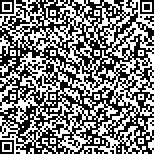| 引用本文: | 汤鑫,朱焱,沈毅,司晓云,何万娅,聂颖.家族性双侧大结节性肾上腺增生症生物标志物的生信分析[J].生物信息学,2023,21(4):286-295. |
| TANG Xin,ZHU Yan,SHEN Yi,SI Xiaoyun,HE Wanya,NIE Ying.Bioinformatics analysis of biomarkers of familial bilateral macronodular adrenal hyperplasia[J].Chinese Journal of Bioinformatics,2023,21(4):286-295. |
|
| |
|
|
| 本文已被:浏览 574次 下载 477次 |

码上扫一扫! |
|
|
| 家族性双侧大结节性肾上腺增生症生物标志物的生信分析 |
|
汤鑫1,朱焱1,沈毅2,司晓云2,何万娅1,聂颖1
|
|
(1.贵州医科大学 公共卫生与健康学院,贵阳550025;2.贵州医科大学附属医院 心内科,贵阳 550004)[HJ1.4mm]
|
|
| 摘要: |
| 为寻找与家族性双侧大结节性肾上腺皮质增生症发展有关的潜在治疗靶点和生物标志物。从GEO数据库中下载GSE171558数据集,筛选受家族影响的肾上腺结节与正常的肾上腺组织之间的差异表达基因(Differentially expressed genes,DEGs),并进行基因功能富集分析和蛋白质-蛋白质相互作用网络分析。通过Cytoscape v3.9.1软件中的插件cytoHubba筛选出关键基因,进一步经NetworkAnalyst分析TF-miRNA共调控网络和蛋白质-化合物相互作用。共鉴定出336个DEGs,这些基因主要富集在细胞粘附过程、细胞增殖的正调节过程和RNA加工过程等生物过程,并涉及钙信号通路、PI3K-Akt信号通路和cAMP信号通路等。通过cytoHubba插件获得5个hub基因,经验证分析,多功能蛋白聚糖(Versican,VCAN)、双糖链蛋白聚糖(Biglycan,BGN)被认为是家族性双侧大结节性肾上腺皮质增生症的潜在生物标志物。进一步的GSEA分析结果显示,VCAN主要与丁酸代谢、ECM-受体相互作用和类固醇生物合成等有关。BGN主要涉及剪接体、皮质醇的合成和分泌和类固醇生物合成等。利用NetworkAnalyst分别展示了生物标志物与miRNA和已知化合物的相互作用网络。VCAN和BGN基因可作为家族性双侧大结节性肾上腺皮质增生症的潜在生物标志物,这些基因特征和通路可能是家族性双侧大结节性肾上腺皮质增生症患者新的治疗靶点。 |
| 关键词: 生物信息学 双侧大结节性肾上腺皮质增生症 差异表达基因 |
| DOI:10.12113/202210007 |
| 分类号:R586 |
| 文献标识码:A |
| 基金项目: |
|
| Bioinformatics analysis of biomarkers of familial bilateral macronodular adrenal hyperplasia |
|
TANG Xin1,ZHU Yan1,SHEN Yi2,SI Xiaoyun2,HE Wanya1,NIE Ying1
|
|
(1. School of Public Health,Guizhou Medical University, Guiyang 550025, China; 2. Department of Cardiology, Affiliated Hospital of Guizhou Medical University,Guiyang 550004, China)
|
| Abstract: |
| To search for potential therapeutic targets and biomarkers associated with the development of familial bilateral macronodular adrenocortical hyperplasia, this paper downloads the GSE171558 dataset from the GEO database, screens for differentially expressed genes (DEGs) between familially affected adrenal nodules and normal adrenal tissue, and performes gene function enrichment analysis and protein-protein interaction network analysis. The key genes are screened by the plug-in cytoHubba in Cytoscape v3.9.1 software, and the TF-miRNA co-regulation network and protein-chemical interaction are further analyzed by NetworkAnalyst. A total of 336 DEGs are identified in this study. These genes are mainly enriched in cell adhesion, positive regulation of cell proliferation, RNA processing, and other biological processes, and are involved in calcium signaling pathway, PI3K-Akt signaling pathway, and cAMP signaling pathway. Five hub genes are obtained through the cytoHubba plug-in. After validation analysis, Versican (VCAN) and Biglycan (BGN) are considered as potential biomarkers for familial bilateral macronodular adrenal hyperplasia. Further GSEAanalysis shows that VCANis mainly related to butyrate metabolism, ECM-receptor interaction and steroid biosynthesis. BGNis mainly involved in the spliceosome, cortisol synthesis and secretion, and steroid biosynthesis. The interaction networks of biomarkers with miRNAs and known compounds are displayed respectively by NetworkAnalyst. VCANand BGNgenes can be used as potential biomarkers for familial bilateral macronodular adrenal hyperplasia, and these gene signatures and pathways may be new therapeutic targets in patients with familial bilateral macronodular adrenal hyperplasia. |
| Key words: Bioinformatics Bilateral macronodular adrenal hyperplasia Differentially expressed genes |
|
|
|
|






